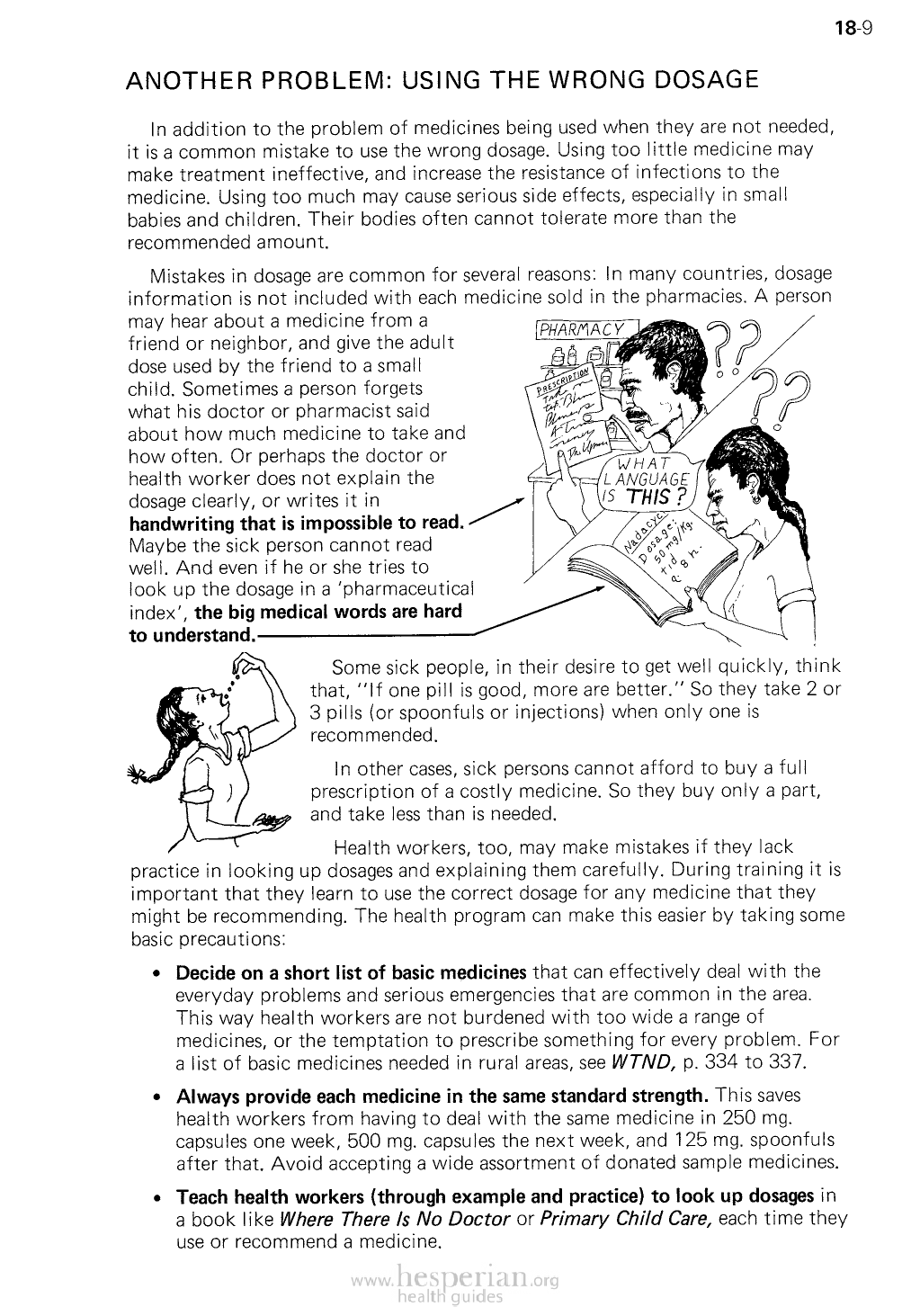
18-9
ANOTHER PROBLEM: USING THE WRONG DOSAGE
In addition to the problem of medicines being used when They are not needed,
it is a common mistake to use the wrong dosage. Using too little medicine
may make treatment ineffective, and increase the resistance of infections to
the medicine. Using too much may cause serious side effects, especially in
small babies and children. Their bodies often cannot tolerate more than the
recommended amount.
Mistakes in dosage are common for several reasons: In many countries, dosage
information is not included with each medicine sold in the pharmacies. A person
may hear about a medicine from a
friend or neighbor, and give the adult
dose used by the friend to a small
child. Sometimes a person forgets
what his doctor or pharmacist said
about how much medicine to take
and how often. Or perhaps the doctor
or health worker does not explain
the dosage clearly, or writes it in
handwriting that is impossible to
read. Maybe the sick person cannot
read well. And even if he or she tries to
look up the dosage in a pharmaceutical
index’, the big medical words are
hard to understand.
Some sick people, in their desire to get well quickly,
think that, “If one pill is good, more are better.” So they
take 2 or 3 pills (or spoonfuls or injections) when only one is
recommended.
In other cases, sick persons cannot afford to buy a full
prescription of a costly medicine. So they buy only a part, and
take less than is needed.
Health workers, too, may make mistakes if they lack
practice in looking up dosages and explaining them carefully. During training it is
important that they learn to use the correct dosage for any medicine that they might
be recommending. The health program can make this easier by taking some basic
precautions:
• Decide on a short list of basic medicines that can effectively deal with
the everyday problems and serious emergencies that are common in the
area. This way health workers are not burdened with too wide a range of
medicines, or the temptation to prescribe something for every problem. For a
list of basic medicines needed in rural areas, see WTND, 334 to 337.
• Always provide each medicine in the same standard strength. This
saves health workers from having to deal with the same medicine in 250 mg.
capsules one week, 500 mg. capsules the next week, and 125 mg. spoonfuls
after that. Avoid accepting a wide assortment of donated sample medicines.
• Teach health workers (through example and practice) to look up
dosages in a book like Where There Is No Doctor or Primary Child Care,
each time they use or recommend a medicine.